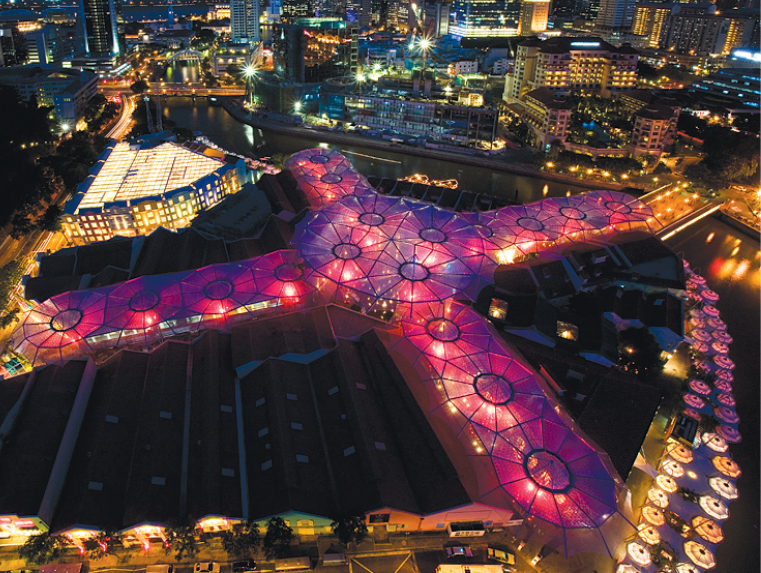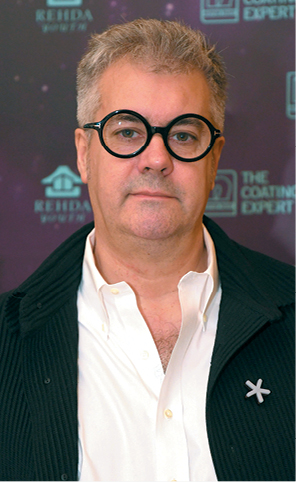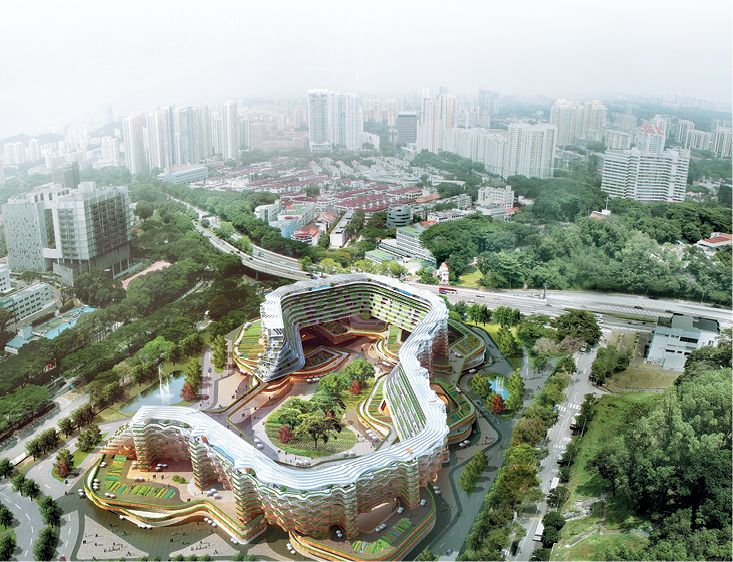Connecting people and cities through spaces

Buildings and spaces can be where people come together, interact and create meaningful bonds with one another. For SPARK Architects (Singapore) director Stephen Pimbley, this is often the top priority in his mind. One of the main considerations as an architect is to create “socially sustainable” buildings and spaces.
 “I like to create places where people enjoy being in. It is about making people feel better by what you do — for me, that is much more relevant. It is not just about the big master plans and about making money, as it all comes down to making people’s lives better,” Pimbley told the audience during his talk entitled “Connected Architecture” at the Future Forward Forum 2017 on Sept 7.
“I like to create places where people enjoy being in. It is about making people feel better by what you do — for me, that is much more relevant. It is not just about the big master plans and about making money, as it all comes down to making people’s lives better,” Pimbley told the audience during his talk entitled “Connected Architecture” at the Future Forward Forum 2017 on Sept 7.
The forum was organised by Rehda Youth, the youth division of the Real Estate and Housing Developers’ Association Malaysia, in partnership with Nippon Paint Malaysia. EdgeProp.my was the official media partner.
As a young architect, Pimbley was drawn to and inspired by the Nolli Map. The Nolli Map is a two-dimensional drawing or plan that comprehends how the flow of space works within a city as well as its accessibility.
The first Nolli Map was drawn by Italian architect Giovanni Battista Nolli who gave birth to the drawing plan of Rome, Italy.
“It is a very beautiful drawing. But what I think is very interesting about this plan is the spaces inside the buildings — the basilicas, churches, libraries and public buildings that inhabit Rome as public spaces.
“So, it is not just about the open streets, avenues and boulevards that are inhabited by people — it’s the buildings themselves. The drawing correlates the public spaces inside and outside the buildings that become the domain of the public,” Pimbley elaborated.
Clarke Quay
One of Pimbley’s most well-known projects and his first in Southeast Asia was the Clarke Quay waterfront redevelopment in Singapore — SPARK Architects was responsible for the refurbishment of the heritage shophouses, landscaping, creating canopies and finding new waterfront food and beverage spaces in the area.
 “A long time ago, Singapore’s river was the life of the city. Of course, as the country grew and more developments took place, life disappeared from the city. Being my first project in Southeast Asia, it formulated a lot of the ideas that are inherent in the projects I am currently working on,” he said.
“A long time ago, Singapore’s river was the life of the city. Of course, as the country grew and more developments took place, life disappeared from the city. Being my first project in Southeast Asia, it formulated a lot of the ideas that are inherent in the projects I am currently working on,” he said.
One of the goals of the Clarke Quay conservation redevelopment project was to bring people back to the river as a sustainable communal public space.
“For some people, it might be associated with bars and restaurants, but it really is about re-animating the waterfront. This project has remained very successful till today,” Pimbley shared.
The redevelopment of the landmark was completed in 2005 and today attracts some 12 million visitors yearly. Clarke Quay has also been recognised with numerous awards including the Cityscape Architectural Review Awards (for the Tourism, Travel and Transport Built category) in 2007 and Cityscape Asia Awards (for the Best Waterfront Development category) in 2008.
HomeFarm
Meanwhile, Pimbley has also come up with an interesting concept for urban retirement housing known as HomeFarm. The conceptual design of HomeFarm was awarded the World Architecture Festival and Awards for the Experimental category in 2015. While this project has yet to take its physical form, Pimbley said it is essentially a combination of two ideas — food creation and aged care living — into one single project.
“I remember when my mother’s aunt was diagnosed with tuberculosis — she spent a long time in a hospital. Most of the places where people stay when they are sick are terrible buildings. They are designed more for the clinicians than for the patients.

“I also read about the ageing population in Japan — that adult diapers outsell children’s diapers. I told myself not to think about it but I could not help it. As I thought more about it and did more research, I found out that in 2030, one in every four Singaporeans will be aged 65 and above. That translates into better healthcare, people living longer and being able to make meaningful contributions to the society; but, there are other implications as well,” said Pimbley.
He then came across the word “Sitopia”, an ancient Greek word that combines the word “sitos” (food) and “topos” (place). That ignited something in him and the result was a desire to come up with an urban retirement housing concept that combines housing and facilities for the elderly with something seemingly unrelated — urban farming. This concept could address two issues — an ageing society and food security.

“I found out that in Singapore, almost over 90% of our food is imported. With this project, the people staying in the retirement home can also work part-time in this farming business and make some income to pay off, say, their medical fees or utility bills. Of course, it is by choice [to work part-time]. There will be professional organisations to manage the farms,” said Pimbley.
It is evident from his designs and ideas that buildings, places and people are interconnected and all the three components need to co-exist in a socially sustainable manner.
This story first appeared in EdgeProp.my pullout on Oct 6, 2017. Download EdgeProp.my pullout here for free.
Never miss out
Sign up to get breaking news, unique insights, event invites and more from EdgeProp.
Latest publications
Malaysia's Most
Loved Property App
The only property app you need. More than 200,000 sale/rent listings and daily property news.
